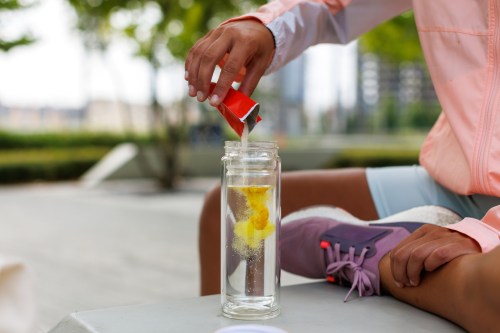54 Million Americans Are Facing Food Insecurity—Here’s How To Start a Community Fridge in Your Neighborhood
With 54 million people facing food insecurity due to Covid-19, community fridges can help on a local scale. This is how to get started.

More than 54 million Americans are experiencing food insecurity as a result of COVID-19. For 40 percent of these individuals, it’s for the first time. While organizations and federal programs like Supplemental Nutrition Assistance Program (SNAP) are helping, due to the growing demand, food banks and pantries are picking up much of the slack. But this isn’t sustainable. “New York-based City Harvest spent about $10 million on food purchases from March through November,” reports CNBC. “That’s up nearly 50 times the $208,000 the organization typically spends in a normal fiscal year.” With limited resources, restrictions based on documentation, lines at these centers longer than ever before, and transportation to and from them not always available, other more local solutions have popped up in the form of community fridges.
Experts in This Article
Emma Hoffman is the founder of NYU’s first community fridge with Freedge and an expert on food insecurity and sustainability.
“Community fridges are grassroots, collaborative initiatives centered around helping people meet their basic needs and bringing more awareness to food insecurity through creativity, team building, neighborhood participation, art, and placemaking,” says Emma Hoffman, longtime member of Freedge, an international network of community fridges established in 2014 that now supports over 200 registered fridges throughout the United States. “They are hubs of change, community, and innovation.”
Community fridges offer everything from free food to clothes, toiletries, tools, and even cleaning supplies on a 24/7, need-based, no-questions-asked basis. Started and maintained by volunteers, activists, and community members, all of the products in the fridge are donated by people, restaurants, and organizations fighting to limit the rates of food insecurity and increase food sustainability in their neighborhoods. While community fridges have been around for years (the concept began as an anti-food waste movement in Europe in 2014), the past year has seen an influx of attention toward them and more fridges, donations, and volunteers. Prior to COVID-19, most community fridges would stock all kinds of food, from homemade meals, to restaurant leftovers, and extra snacks from events, film sets, and conferences, but due to the health restrictions of the pandemic most locations are limiting their donations to only allow washed produce, canned goods, and boxed nonperishables.
How to start a community fridge in your neighborhood
1. Choose the location
The first step when it comes to starting a community fridge is selecting the right location. Since there will most likely be a steady flow of people coming in and out of the area at all times of the day and night, one needs to consider if they have the necessary permits to use the space (Freedge has provided a list of legal guidelines), if people are allowed to gather there, if it has a power outlet for the fridge itself, if it is weather safe and protected from the elements, and if it is adequately visible to the public and accessible to individuals of all abilities. It’s also important to research your area and find a location that serves the most people in need. Freedge recommends finding an individually owned business that is enthusiastic about the cause, which allows for an open stream of communication with the proprietors and prevents conflict with food-permit regulations that could impact other food vendors.
2. Find a fridge
In terms of acquiring the fridge itself, Hoffman recommends reaching out to different restaurants and organizations in the area for a donated fridge. The best are secondhand restaurant fridges because they have a glass door which allows those donating to see what is missing, and those taking from the fridge to see what is there. Having a glass door also helps spark more community interest in the project. When Hoffman started a fridge on New York University’s campus, she was able to find a smart fridge, from which she could use a camera to stream what was inside on social media for further awareness.
3. Build a team
According to Hoffman, the best part about community fridges is that there are no barriers to entry. Anyone can volunteer, donate, and take what they need at any time. They are not owned. That said, they do require community participation, and there are many ways to get involved depending on your time, availability, and skill set.
- Donate food or supplies to the fridge
- Engage in social media outreach and post about the fridge using its specific tags
- Help paint and decorate the fridge
- Graphically design, pass out, or put up flyers
- Volunteer to help with cleaning the fridge or technical fridge maintenance
- Offer transportation (or gas money) to help collect larger donations and bring them back to the location
- Use your carpentry skills to create a shed to protect the fridge from rain or snow
4. Find regular donors
Since 1/3 of all food produced is wasted, Hoffman recommends reaching out to organizations that focus on food waste and redistribution, hunger, poverty, and homelessness as well as restaurants in your community to create partnerships and secure a steady source of food donations on top of individual, neighborhood donors to make sure that the fridge is always fully stocked. (City Harvest is a good place to start, says Hoffman.)
5. Spread the word
Finally, once your team and community is ready to launch the fridge, it’s important to spread the word to anyone able to donate and so that those in need know where to find it. Ask friends, neighbors, coworkers, and family to post, champion, and advocate on social media and pin flyers around the neighborhood. The best places to hang them are in community areas like recreation centers, libraries, and transportation hubs.
To remain a sustainable effort towards fighting local food insecurity, use your digital and community networks to link the fridge to community gardens, local farms, pop-up kitchens and donation centers to increase awareness and ensure a steady stream of donations.
Oh hi! You look like someone who loves free workouts, discounts for cult-fave wellness brands, and exclusive Well+Good content. Sign up for Well+, our online community of wellness insiders, and unlock your rewards instantly.










